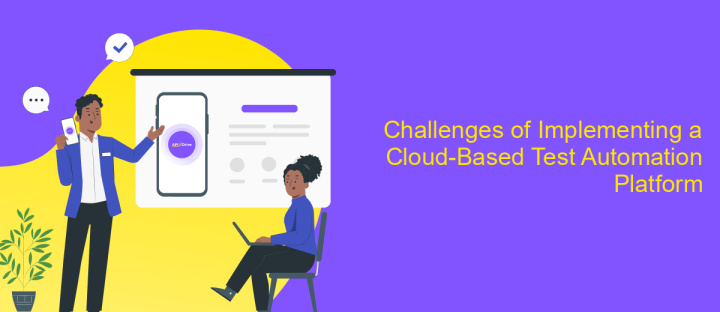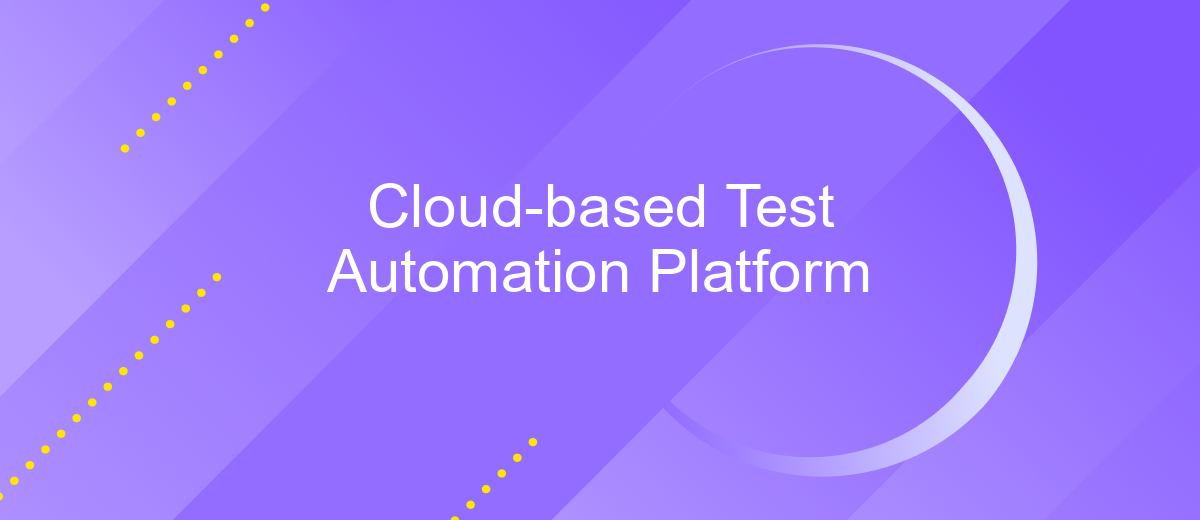Cloud-based Test Automation Platform
In today's fast-paced digital landscape, businesses are increasingly turning to cloud-based test automation platforms to streamline and enhance their software testing processes. These platforms offer scalable, flexible, and cost-effective solutions that enable teams to execute tests from anywhere, at any time. By leveraging the power of the cloud, organizations can accelerate their development cycles, improve product quality, and stay competitive in a rapidly evolving market.
Introduction
In today's fast-paced digital landscape, cloud-based test automation platforms have emerged as vital tools for agile software development. These platforms offer scalable, flexible, and efficient solutions for testing applications across diverse environments and devices. By leveraging the power of the cloud, organizations can streamline their testing processes, reduce costs, and accelerate time-to-market for their products.
- Scalability: Easily scale testing resources up or down based on project requirements.
- Accessibility: Access testing tools and environments from anywhere with an internet connection.
- Cost-effectiveness: Reduce infrastructure and maintenance costs by utilizing cloud resources.
- Integration: Seamlessly integrate with existing development and CI/CD pipelines.
- Collaboration: Enhance team collaboration with centralized test management and reporting.
As businesses strive to deliver high-quality software faster, cloud-based test automation platforms provide a strategic advantage. They enable teams to focus on innovation and quality assurance rather than managing complex testing infrastructures. By adopting these platforms, organizations can improve their testing efficiency, ensure comprehensive test coverage, and ultimately deliver superior user experiences. As a result, cloud-based test automation is becoming an indispensable component of modern software development practices.
Benefits of Cloud-Based Test Automation Platforms

Cloud-based test automation platforms offer numerous advantages that significantly enhance the testing process. One of the primary benefits is scalability. These platforms allow teams to scale their testing efforts up or down based on project needs, without the limitations of physical infrastructure. This flexibility ensures that resources are efficiently utilized, leading to cost savings and improved productivity. Additionally, cloud-based platforms provide access to a wide range of testing environments, enabling comprehensive testing across different browsers, devices, and operating systems.
Another key advantage is the ease of integration with other tools and services. Platforms like ApiX-Drive facilitate seamless integration, allowing teams to connect their test automation tools with various applications effortlessly. This integration capability streamlines workflows, enhances collaboration, and accelerates the overall testing process. Furthermore, cloud-based platforms often come with robust analytics and reporting features, providing valuable insights into test performance and helping teams make data-driven decisions. Overall, these platforms empower organizations to deliver high-quality software faster and more efficiently.
Key Features to Look for in a Cloud-Based Test Automation Platform

When selecting a cloud-based test automation platform, it's crucial to consider features that enhance efficiency and scalability. A robust platform should streamline the testing process while providing flexibility to adapt to changing requirements.
- Scalability: Ensure the platform can handle varying workloads and scale with your project's needs.
- Cross-Browser and Cross-Device Testing: The ability to test across multiple browsers and devices is essential for comprehensive coverage.
- Integration Capabilities: Look for seamless integration with popular CI/CD tools and other development environments.
- Real-Time Reporting and Analytics: Access to detailed, real-time insights helps in quick decision-making and identifying issues promptly.
- Parallel Execution: Running tests simultaneously can significantly reduce testing time and improve efficiency.
- Security Features: Ensure the platform offers robust security measures to protect sensitive data and test environments.
By focusing on these key features, organizations can select a cloud-based test automation platform that not only meets their current needs but also supports future growth and technological advancements. This strategic choice can lead to improved software quality and faster release cycles.
Challenges of Implementing a Cloud-Based Test Automation Platform

Implementing a cloud-based test automation platform presents several challenges that organizations must navigate to ensure successful deployment. One major hurdle is the integration of existing tools and processes with the new cloud-based system. Compatibility issues can arise, leading to disruptions in workflow and requiring additional time and resources to resolve.
Another significant challenge is data security and privacy. As testing environments move to the cloud, sensitive data may become vulnerable to unauthorized access. Organizations must implement robust security measures to protect their data and comply with regulations, which can be complex and costly.
- Ensuring reliable internet connectivity to access cloud resources consistently.
- Managing costs associated with cloud services, which can escalate without proper monitoring.
- Training staff to effectively use the new platform, which may require time and investment.
Despite these challenges, the benefits of a cloud-based test automation platform, such as scalability and flexibility, can outweigh the difficulties if approached strategically. Organizations should conduct thorough planning and adopt best practices to mitigate these challenges and fully leverage the advantages of cloud technology in their testing processes.
Best Practices for Implementing a Cloud-Based Test Automation Platform
Implementing a cloud-based test automation platform requires a strategic approach to ensure efficiency and scalability. First, it is crucial to select a platform that aligns with your team's technical skills and project requirements. Evaluate different tools and consider factors such as ease of integration, support for multiple languages, and cross-browser testing capabilities. Establish a clear testing strategy that includes defining test cases, prioritizing them based on risk, and automating repetitive tasks to save time and resources.
Integration is key to maximizing the benefits of a cloud-based platform. Utilize services like ApiX-Drive to streamline the integration of various tools and services, ensuring seamless data flow and communication between systems. This can significantly enhance collaboration and reduce manual efforts. Regularly monitor and update your testing environment to adapt to new technologies and business needs. Encourage continuous learning and improvement by providing training sessions and encouraging team feedback. By following these best practices, organizations can optimize their cloud-based test automation efforts, leading to more reliable and faster software releases.
FAQ
What is a cloud-based test automation platform?
How does a cloud-based platform improve test automation efficiency?
Can I integrate cloud-based test automation with my existing tools?
What are the security considerations for using a cloud-based test automation platform?
How does a cloud-based test automation platform support scalability?
Routine tasks take a lot of time from employees? Do they burn out, do not have enough working day for the main duties and important things? Do you understand that the only way out of this situation in modern realities is automation? Try Apix-Drive for free and make sure that the online connector in 5 minutes of setting up integration will remove a significant part of the routine from your life and free up time for you and your employees.

